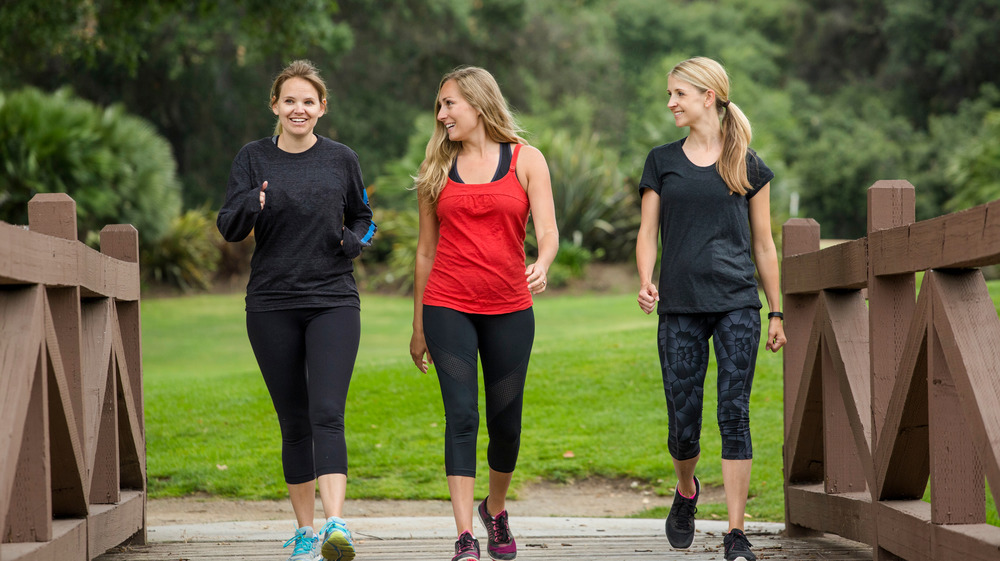What Happens To Your Body When You Start Power Walking
If you've tried to start a running or jogging regimen in the past but simply couldn't make it stick, power walking might be the better option for you. Power walking, also known as brisk walking, is a low-impact cardio activity that can not only improve your overall health, but also help you lose weight, boost bone health, and even improve your mindset (via Healthline). Bonus: Swap a drive for a walk once or twice a week and you'll also save money on gas while being more environmentally friendly in the process.
When you're walking quickly, you're obviously going to burn calories. But power walking regularly can also help counter the effects of certain genes that are often linked to obesity — essentially, walking helps you hack your DNA. And some studies have even found that walking can help decrease sugar cravings. At the least, taking a brisk walk after dinner can help you avoid dessert (via Harvard Health Publishing). Because it's a low-impact activity, you're also less likely to finish your walk and immediately be hungry for a snack, as you would after a high-impact workout.
It's also good for general health, from lowering blood pressure, to easing joint pain, to improving your immune system. Walking regularly is one of the simplest ways to improve health outcomes, with no prescription or equipment needed.
How does power walking differ from walking?
You might be wondering what qualifies as power walking. Experts at Harvard define brisk walking as taking more than 100 steps per minute, but as long as you're breathing a bit hard — but still able to speak in full sentences — you're at roughly the right speed (via Harvard Health Publishing). And while you may think neon sweatsuits and speedy arm movements are required, you don't actually need to stress on your arm swing (or wardrobe). Walk naturally, and let your arms swing in time with your step, but don't focus on them (via Healthline).
As you get started with power walking, consider simply sprinkling the harder effort into your regular daily walking routine. Walk at a comfortable pace to warm up, then do a few faster walking intervals. Slowly build up to walking mostly at that faster pace. The slow build will help you avoid injuries and soreness, and help you cement the habit (via LIVESTRONG).
Lastly, don't confuse power walking with race walking, which is an Olympic sport where walkers can get up to speeds as fast as 10 miles per hour. Race walkers are required to use specific movement techniques, like not bending their knees, and it's a lot harder than it looks.


